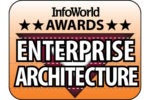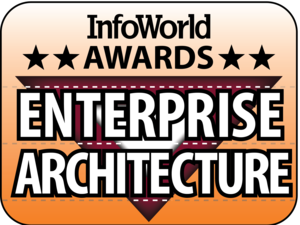World Bank Group EA works for global development
In 2012, the president of World Bank Group (WBG) set two ambitious goals for WBG: to end extreme poverty, and to boost shared prosperity in a sustainable manner by 2030. In that context, WBG underwent a massive transformation from being a “knowledge bank” to being the “solutions bank.” As the “solutions bank,” WBG aimed to support every investment project manager with all the financial, knowledge, and convening resources at its disposal to tackle the world’s most pressing development challenges.
 IDG
IDGWBG’s Information and Technology Solutions (ITS) department re-envisioned its role as an enabler for WBG to achieve its mission by delivering transformative information and technologies to the clients.
IT had operated as a federated organization, with individual IT departments supporting business organizations in siloed fashion, building point solutions with little integration and with little consideration for interdependencies with other solutions or for cross-organizational use. Emerging technologies were deployed in a piecemeal manner, lacking an integrated rollout roadmap approach. ITS recognized that not only solutions but also culture and people were critical success factors to achieve its new mission.
Recognizing that EA was not only a tool for IT transformation, but also for cultural transformation, ITS’s EA group defined its mandate to partner with business and IT stakeholders to ensure that the WBG’s IT landscape remains cohesive, so ITS can respond quickly and effectively to business-driven changes. EA adopted innovative approaches and stakeholder engagement models to meet the mandate while becoming a culture change agent. It brought in design studio workshops, adopted from the design-thinking methodology, bringing user-centric design to the forefront of the solutions and addressing users’ needs rather than business sponsors’ wishes.
EA has now created a platform for dialog, learning, deliberation, and cooperation in WBG. Those efforts have led to a new culture of innovation, agility, and camaraderie. EA earned the credibility and trust of its stakeholders by bringing quality and analytical rigor, and by making complex topics simple to understand with innovative information visualization.
Enterprise Architecture Awards judge Claus Jenson, chief architect of Aetna, notes its “stakeholder engagement models, design thinking, and more. The EA team is transforming itself along a much more customer-obsessed model.”
XL Catlin EA drives the insurance company’s transformation
In 2015, XL acquired Catlin and created XL Catlin, a global property and casualty insurance and reinsurance company with a $12 billion market cap. The immediate priority was the rapid integration of the business models, systems, and IT infrastructure while reducing costs by $200 million.
 IDG
IDGTo enable this, XL Catlin’s EA team was tasked with rapidly defining and driving the target application landscape. EA needed to build its own target operating model to ensure it was effectively collaborating on architecturally significant priorities, ensuring alignment with the target architecture wherever possible. When a priority didn’t align, EA needed to ensure that the architectural debt was managed with the business.
The goal of EA at XL Catlin is to enable the business to achieve their growth plans by managing strategic roadmaps and ensuring the implications of decisions taken in the short term are understood. To accomplish this goal, EA is active partners in the development of the business and technology strategy. It is responsible for defining target architectures for infrastructure, business, data, and IT applications, as well as their integration.
As the new business strategy began to mature, the EA team also needed to define where new technologies would enable the business to drive efficiencies and create a competitive advantage. It did this through close partnerships with XL Catlin’s digital and innovation teams. Using a design-thinking approach, it prioritized several business areas where it could learn about new technologies and develop business cases where blockchain, artificial intelligence, robotic process automation, internet of things, and other emerging technologies could benefit XL Catlin.
Savings targets for the requested $200 million were identified through the XL and Catlin integration in early 2015, with the majority being delivered via IT cost savings. XL Catlin has surpassed this goal and expects that it will achieve about $500 million in savings will be achieved by 2018 compared to 2015’s pre-merger combined baseline expenses of about $2.3 billion.
Stakeholders support the value of EA, and EA now represents the business as trusted advisors in industry initiatives, like the B3i consortium (the Blockchain Insurance Industry Initiative, whose 15 members focus on exploring the potential use of distributed ledger technology), and is actively engaged in supporting due diligence for early-stage insurance technology (insuretech) investments, working with XL Catlin’s VC partner XL Innovate.
Enterprise Architecture Awards judge Mark Griffith, former head of EA at Humana, said, “They demonstrated that EA plays a pivotal role in the successful merger of large enterprises. Very impressive results from the synergy targets.”









